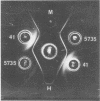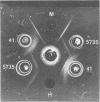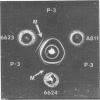Abstract
Soluble yeast-phase (YPS) antigen preparations (Reeves et al., 1972) were obtained from three strains of Histoplasma capsulatum. These were analyzed by agar-gel diffusion and complement fixation tests with human sera from known cases of histoplasmosis. Two of the preparations contained the H and M antigens normally found in histoplasmin, whereas the third preparation contained the H but not the M antigen. In addition, a group of unknown antigens, designated as the Y (yeast) antigens, were demonstrated in all three YPS preparations. On the basis of Sephadex gel filtration data, the molecular weight of the YPS M antigen was estimated to range from 117,000 to greater than 200,000; that of the YPS H antigen was estimated to range from about 60,000 to greater than 200,000; and that of the Y antigens was estimated to range from less than 10,000 to 100,000. Complement fixation tests with human homologous and heterologous sera showed that the Y antigens were specific for H. capsulatum; Y antigens were not detected in the single lot of histoplasmin used in this study. When 60 human histoplasmosis sera and serum samples from nine animals experimentally infected with H. capsulatum were analyzed, it was found that antibodies to the Y antigens occurred with about the same frequency as antibodies to the H antigen but with less frequency than that of antibodies to the M antigen. When used in rabbits as immunogens for the preparation of specific antisera to H. capsulatum, the components of the YPS preparations caused the formation of numerous cross-reacting antibodies. The data from this study show that the value of the YPS preparations for the serological diagnosis of histoplasmosis rests on the specificity of the H, M, and Y antigens and on the fact that the primary production of antibodies is restricted to these antigens in the course of natural infections. The YPS preparations were found to be stable for a period of at least 11 months under a variety of storage conditions and temperatures. Data obtained with various killing agents and metabolic inhibitors suggest an improved method for preparing the YPS antigens by using a suitable strain and killing the cells with iodoacetate.
Full text
PDF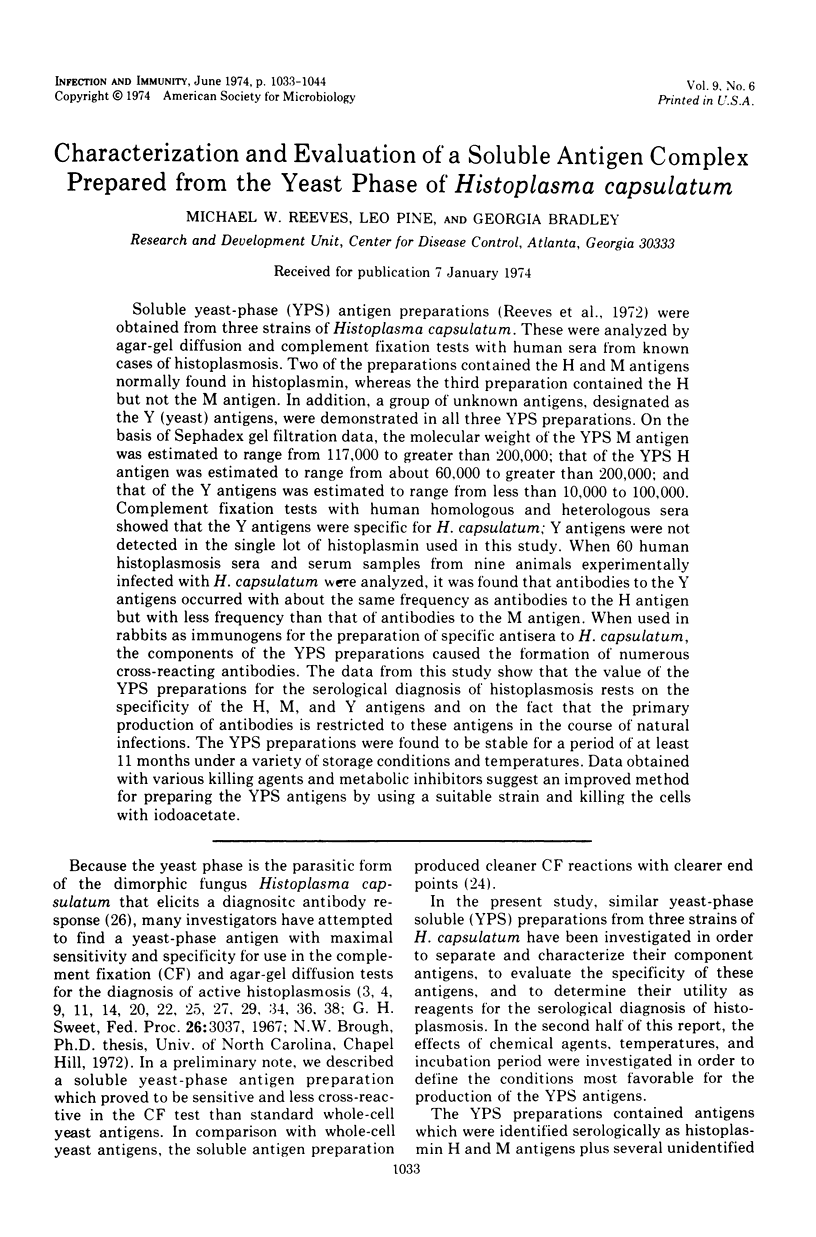
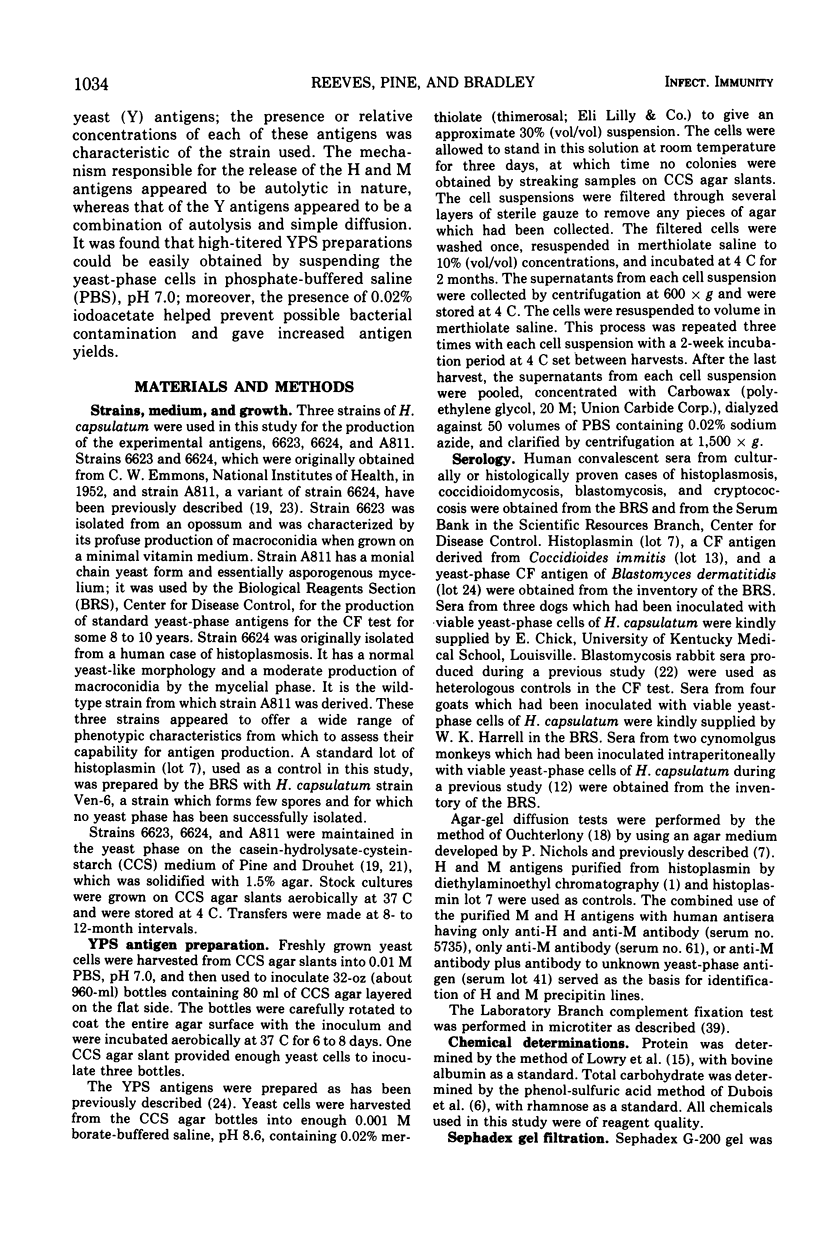
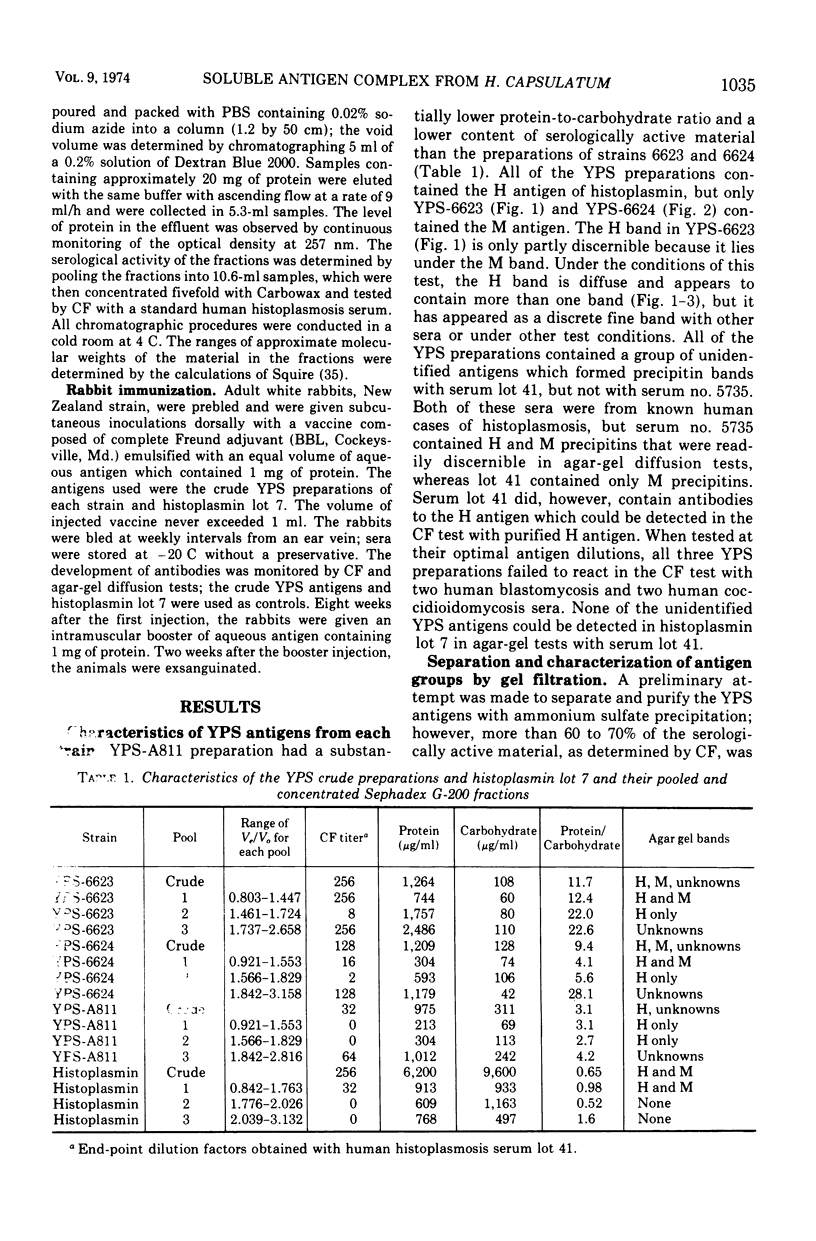
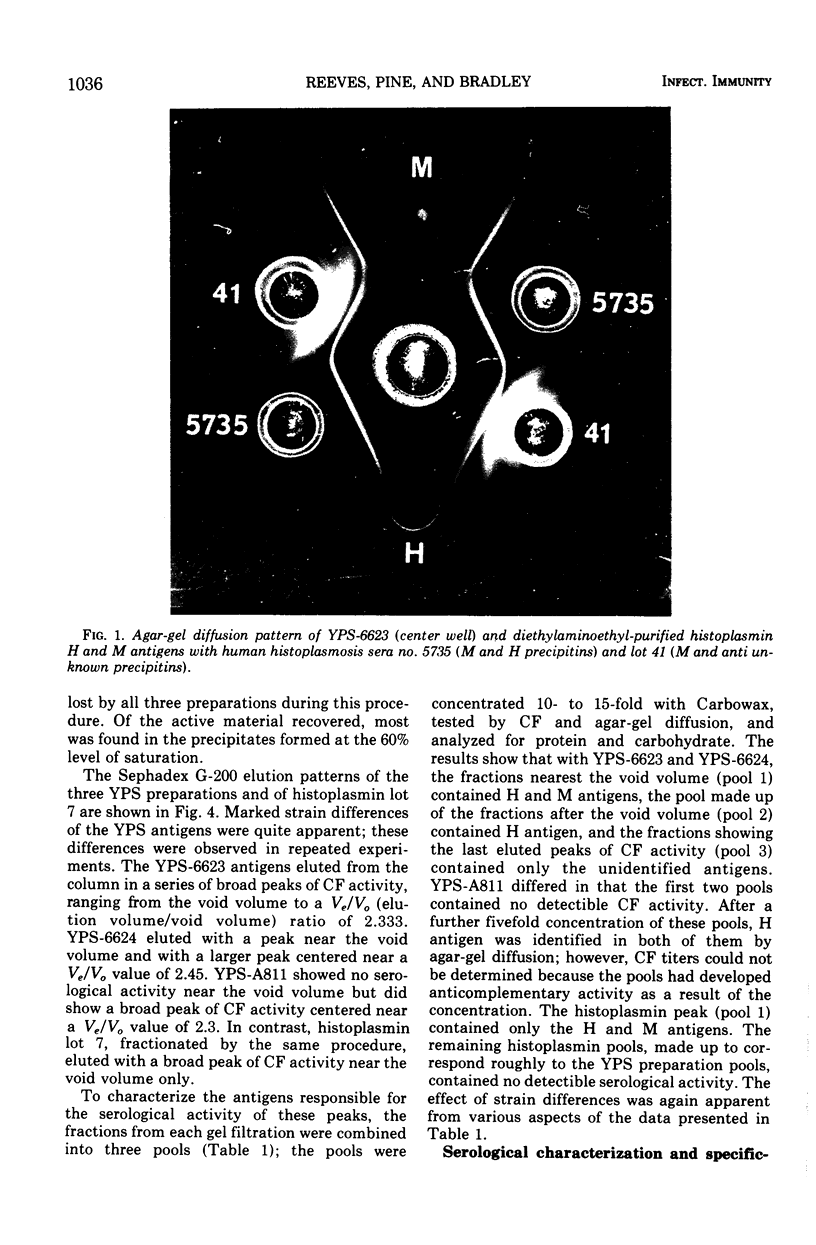
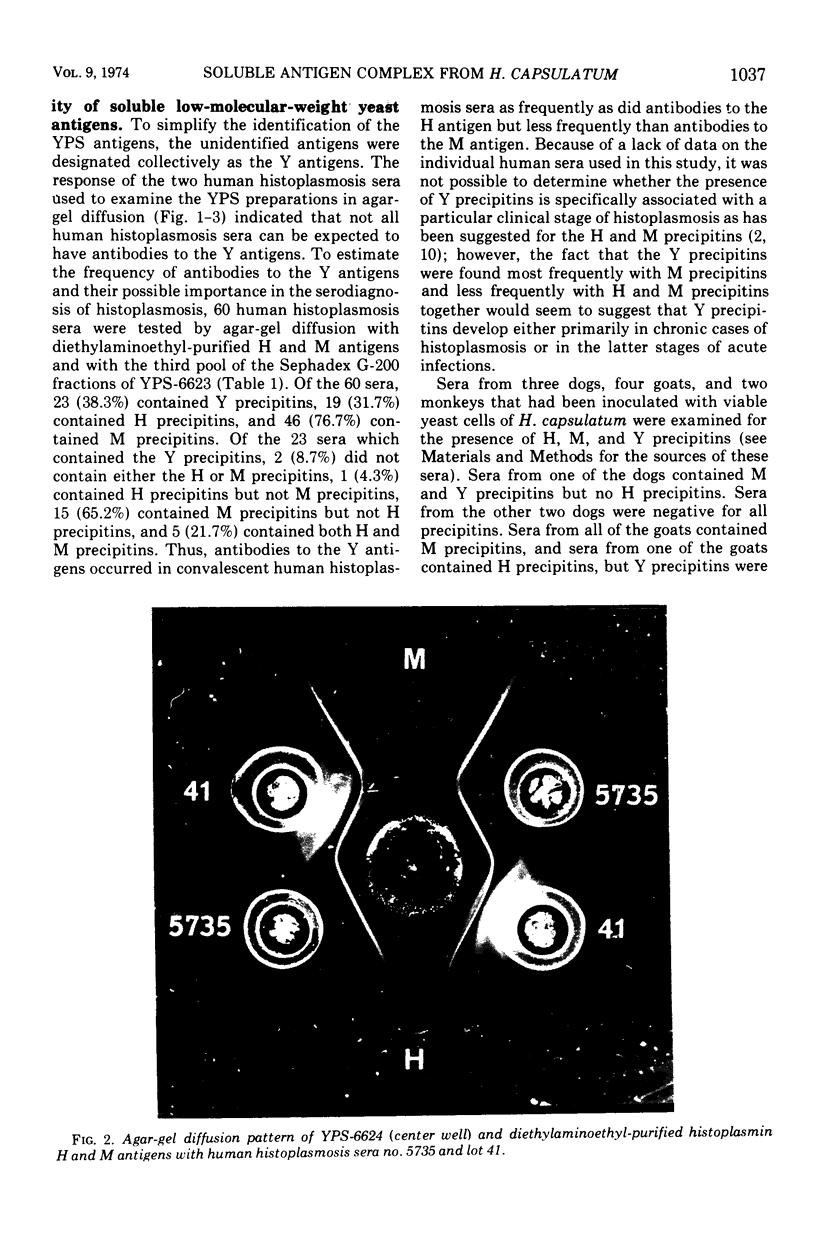
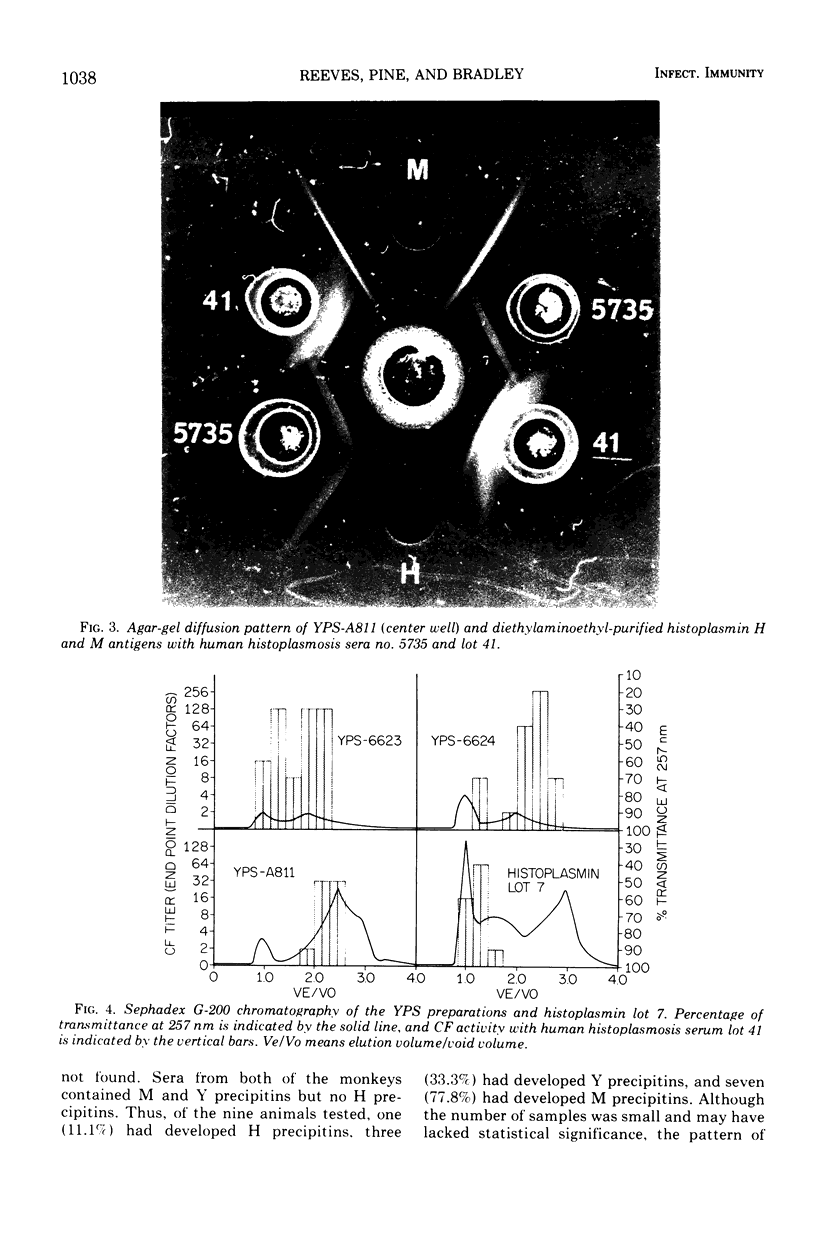
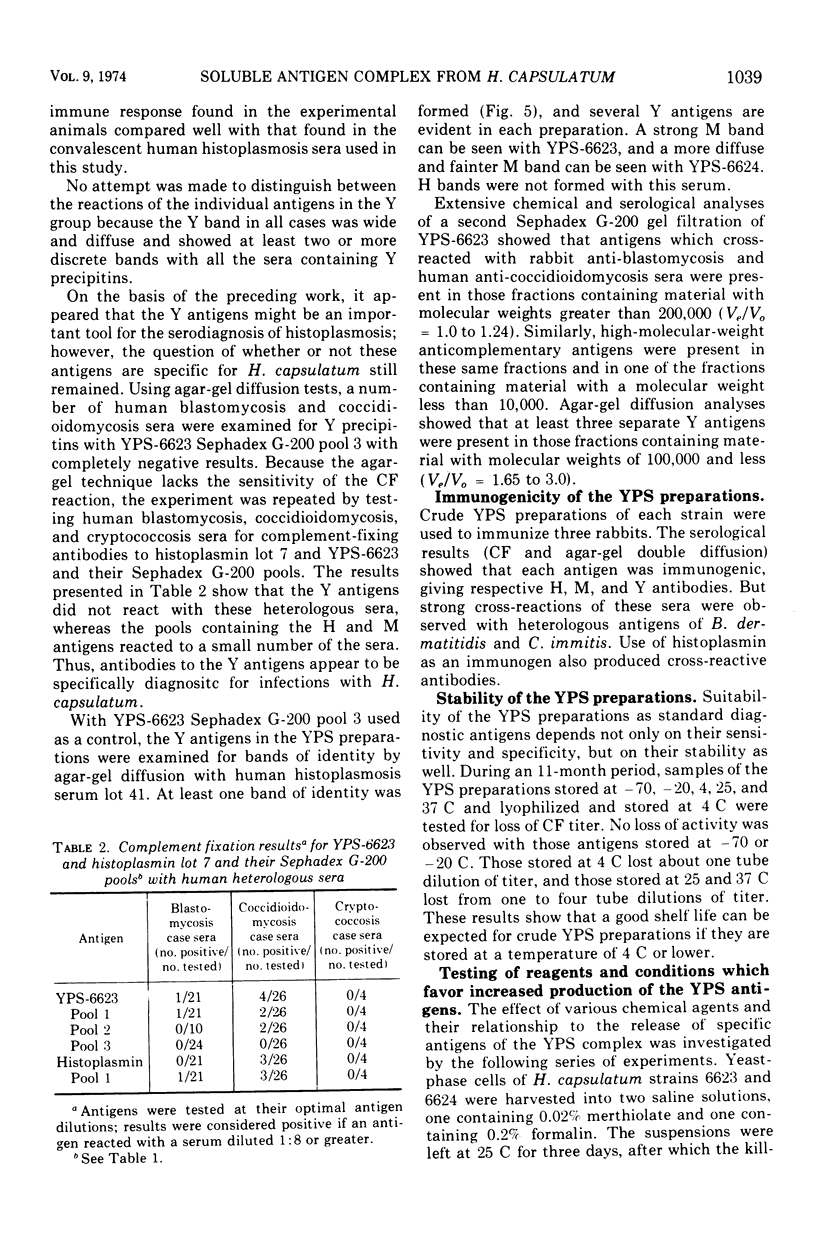
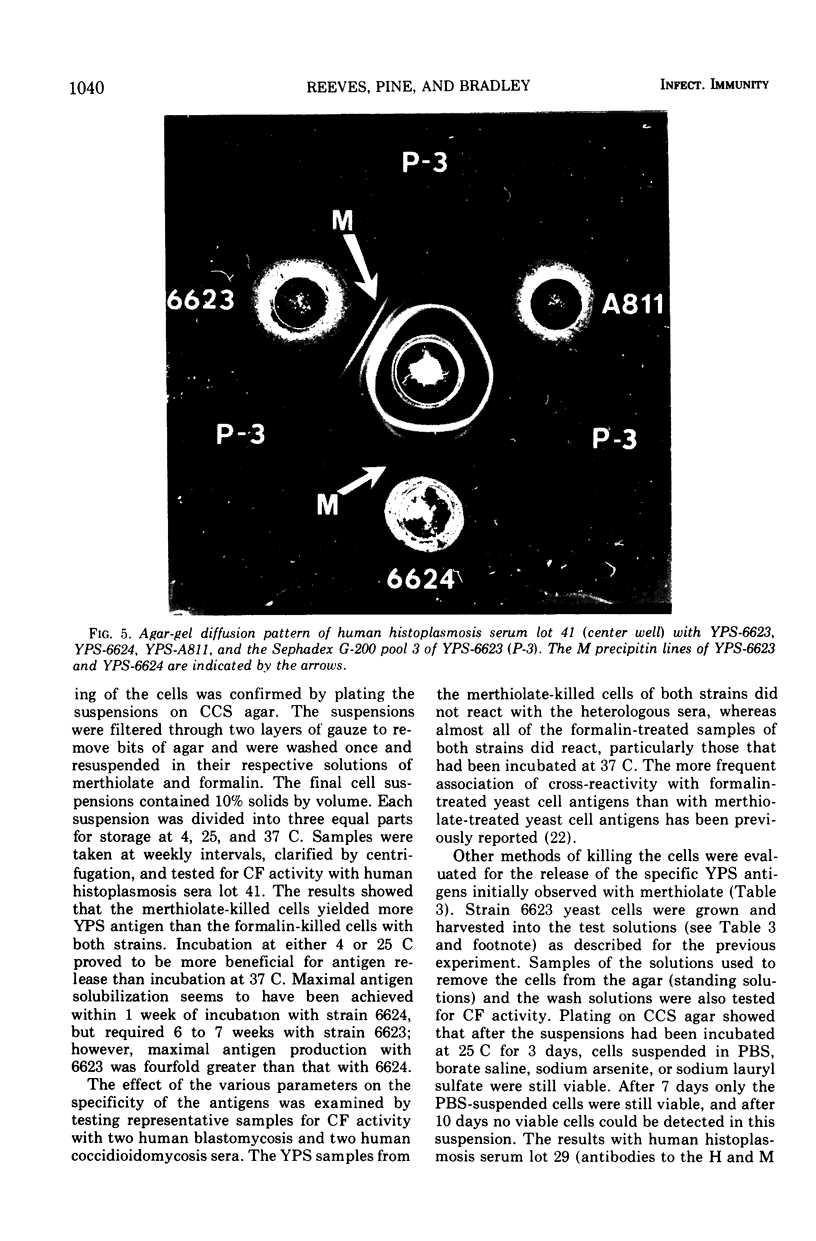
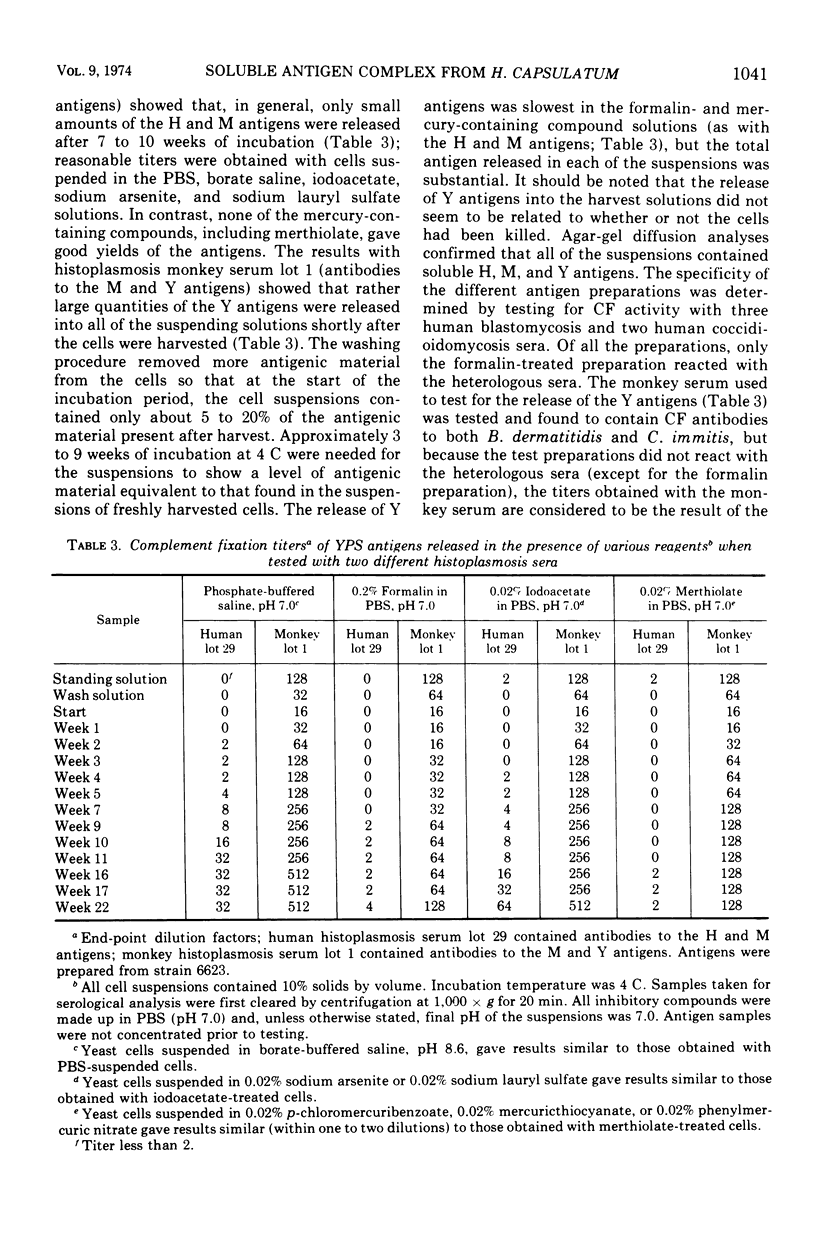
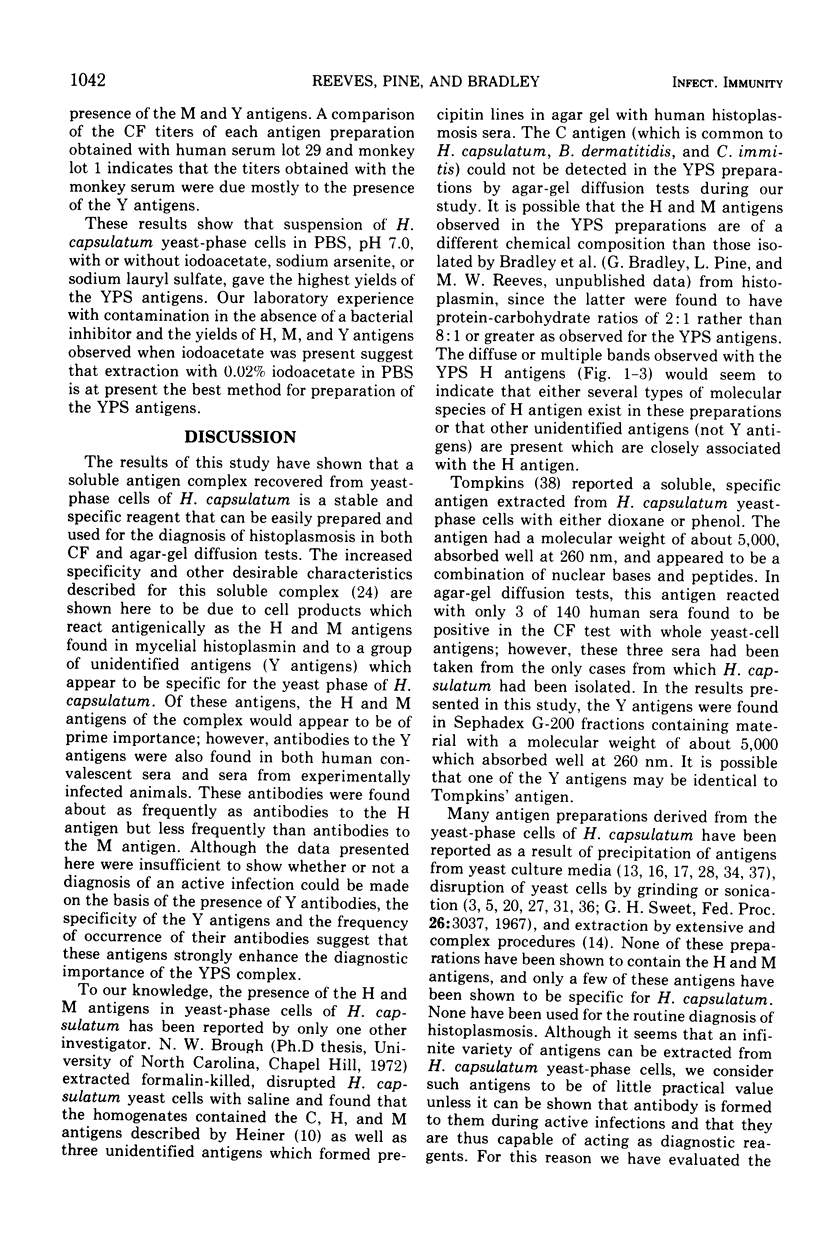
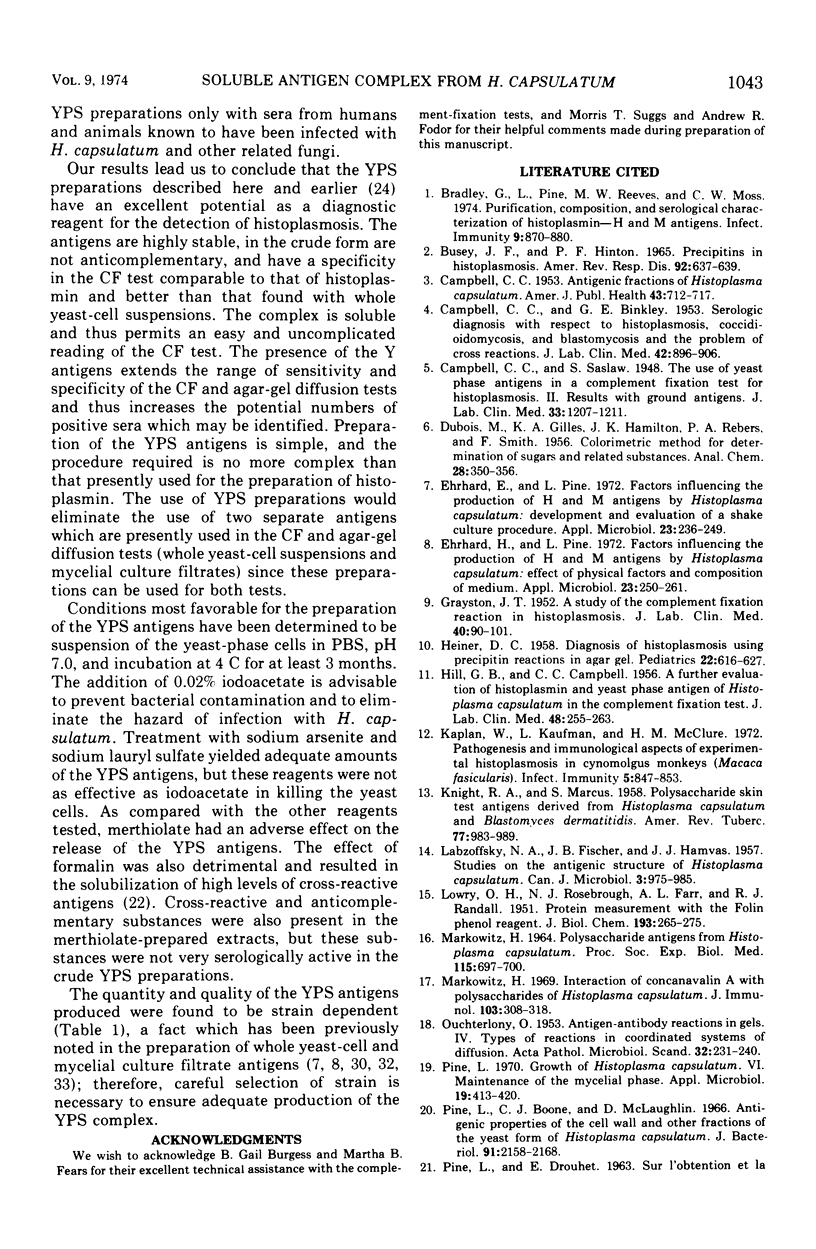
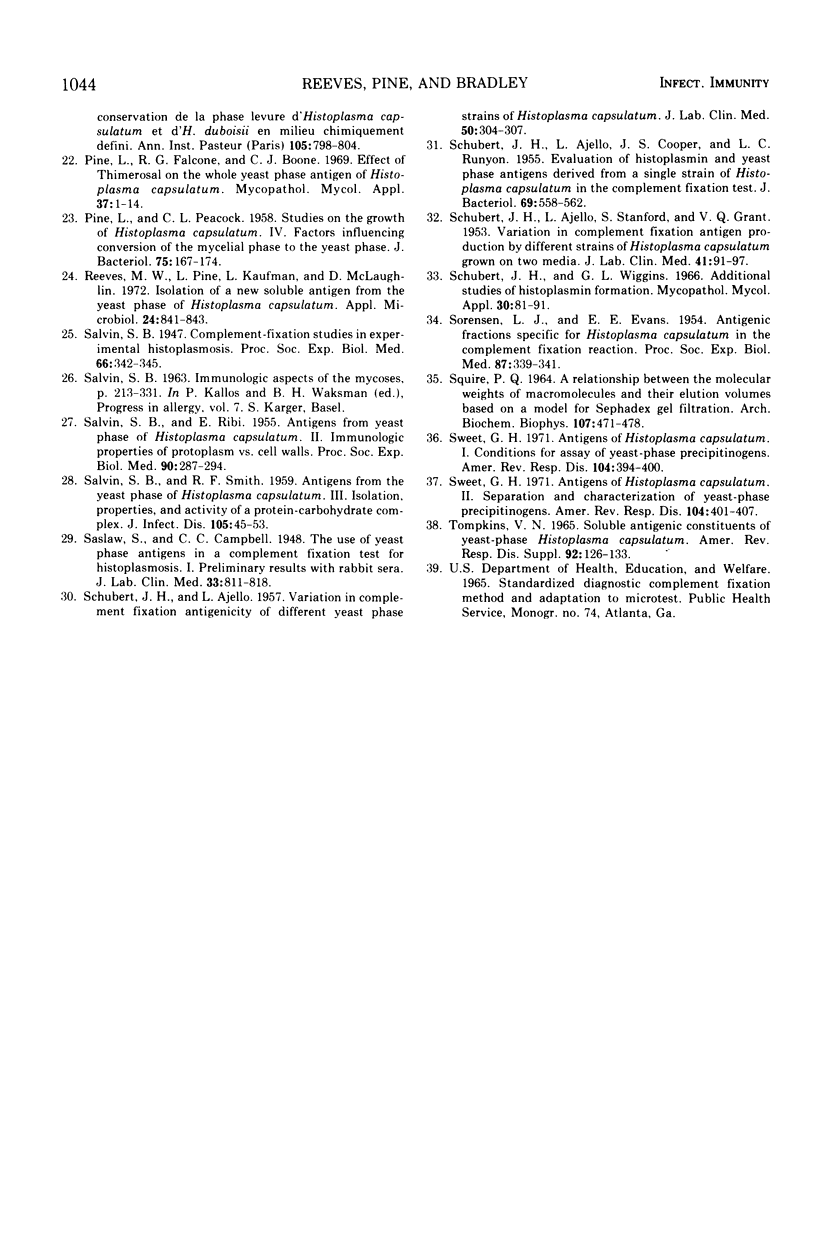
Images in this article
Selected References
These references are in PubMed. This may not be the complete list of references from this article.
- Bradley G., Pine L., Reeves M. W., Moss C. W. Purification, composition, and serological characterization of histoplasmin-H and M antigens. Infect Immun. 1974 May;9(5):870–880. doi: 10.1128/iai.9.5.870-880.1974. [DOI] [PMC free article] [PubMed] [Google Scholar]
- Busey J. F., Hinton P. F. Precipitins in histoplasmosis. Am Rev Respir Dis. 1965 Oct;92(4):637–639. doi: 10.1164/arrd.1965.92.4.637. [DOI] [PubMed] [Google Scholar]
- CAMPBELL C. C. Antigenic fractions of Histoplasma capsulatum. Am J Public Health Nations Health. 1953 Jun;43(6 Pt 1):712–717. doi: 10.2105/ajph.43.6_pt_1.712. [DOI] [PMC free article] [PubMed] [Google Scholar]
- CAMPBELL C. C., BINKLEY G. E. Serologic diagnosis with respect to histoplasmosis, coccidioidomycosis, and blastomycosis and the problem of cross reactions. J Lab Clin Med. 1953 Dec;42(6):896–906. [PubMed] [Google Scholar]
- Ehrhard H. B., Pine L. Factors influencing the production of H and M antigens by Histoplasma capsulatum: development and evaluation of a shake culture. Appl Microbiol. 1972 Feb;23(2):236–249. doi: 10.1128/am.23.2.236-249.1972. [DOI] [PMC free article] [PubMed] [Google Scholar]
- Ehrhard H. B., Pine L. Factors influencing the production of H and M antigens by Histoplasma capsulatum: effect of physical factors and composition of medium. Appl Microbiol. 1972 Feb;23(2):250–261. doi: 10.1128/am.23.2.250-261.1972. [DOI] [PMC free article] [PubMed] [Google Scholar]
- GRAYSTON J. T. A study of the complement fixation reaction in histoplasmosis. J Lab Clin Med. 1952 Jul;40(1):90–101. [PubMed] [Google Scholar]
- HEINER D. C. Diagnosis of histoplasmosis using precipitin reactions in agargel. Pediatrics. 1958 Oct;22(4 Pt 1):616–627. [PubMed] [Google Scholar]
- HILL G. B., CAMPBELL C. C. A further evaluation of histoplasmin and yeast phase antigen of Histoplasma capsulatum in the complement fixation test. J Lab Clin Med. 1956 Aug;48(2):255–263. [PubMed] [Google Scholar]
- KNIGHT R. A., MARCUS S. Polysaccharide skin test antigens derived from Histoplasma capsulatum and Blastomyces dermatitidis. Am Rev Tuberc. 1958 Jun;77(6):983–989. doi: 10.1164/artpd.1958.77.6.983. [DOI] [PubMed] [Google Scholar]
- Kaplan W., Kaufman L., McClure H. M. Pathogenesis and immunological aspects of experimental histoplasmosis in cynomolgus monkeys (Macaca fascicularis). Infect Immun. 1972 Jun;5(6):847–853. doi: 10.1128/iai.5.6.847-853.1972. [DOI] [PMC free article] [PubMed] [Google Scholar]
- LABZOFFSKY N. A., FISCHER J. B., HAMVAS J. J. Studies on the antigenic structure of Histoplasma capsulatum. Can J Microbiol. 1957 Dec;3(7):975–985. doi: 10.1139/m57-108. [DOI] [PubMed] [Google Scholar]
- LOWRY O. H., ROSEBROUGH N. J., FARR A. L., RANDALL R. J. Protein measurement with the Folin phenol reagent. J Biol Chem. 1951 Nov;193(1):265–275. [PubMed] [Google Scholar]
- MARKOWITZ H. POLYSACCHARIDE ANTIGENS FROM HISTOPLASMA CAPSULATUM. Proc Soc Exp Biol Med. 1964 Mar;115:697–700. doi: 10.3181/00379727-115-29010. [DOI] [PubMed] [Google Scholar]
- Markowitz H. Interaction of concanavalin A with polysaccharides of Histoplasma capsulatum. J Immunol. 1969 Aug;103(2):308–318. [PubMed] [Google Scholar]
- OUCHTERLONY O. Antigen-antibody reactions in gels. IV. Types of reactions in coordinated systems of diffusion. Acta Pathol Microbiol Scand. 1953;32(2):230–240. [PubMed] [Google Scholar]
- PINE L., PEACOCK C. L. Studies on the growth of Histoplasma capsulatum. IV. Factors influencing conversion of the mycelial phase to the yeast phase. J Bacteriol. 1958 Feb;75(2):167–174. doi: 10.1128/jb.75.2.167-174.1958. [DOI] [PMC free article] [PubMed] [Google Scholar]
- Pine L., Boone C. J., McLaughlin D. Antigenic properties of the cell wall and other fractions of the yeast form of Histoplasma capsulatum. J Bacteriol. 1966 Jun;91(6):2158–2168. doi: 10.1128/jb.91.6.2158-2168.1966. [DOI] [PMC free article] [PubMed] [Google Scholar]
- Pine L., Falcone R. G., Boone C. J. Effect of thimerosal on the whole yeast phase antigen of Histoplasma capsulatum. Mycopathol Mycol Appl. 1969 Jan 29;37(1):1–14. doi: 10.1007/BF02051325. [DOI] [PubMed] [Google Scholar]
- Pine L. Growth of Histoplasma capsulatum. VI. Maintenance of the mycelial phase. Appl Microbiol. 1970 Mar;19(3):413–420. doi: 10.1128/am.19.3.413-420.1970. [DOI] [PMC free article] [PubMed] [Google Scholar]
- Reeves M. W., Pine L., Kaufman L., McLaughlin D. Isolation of a new soluble antigen from the yeast phase of Histoplasma capsulatum. Appl Microbiol. 1972 Nov;24(5):841–843. doi: 10.1128/am.24.5.841-843.1972. [DOI] [PMC free article] [PubMed] [Google Scholar]
- SALVIN S. B. Immunologic aspects of the mycoses. Prog Allergy. 1963;7:213–331. doi: 10.1159/000391342. [DOI] [PubMed] [Google Scholar]
- SALVIN S. B., RIBI E. Antigens from yeast phase of Histoplasma capsulatum. II. Immunologic properties of protoplasm vs. cell walls. Proc Soc Exp Biol Med. 1955 Oct;90(1):287–294. doi: 10.3181/00379727-90-22012. [DOI] [PubMed] [Google Scholar]
- SALVIN S. B., SMITH R. F. Antigens from the yeast phase of Histoplasma capsulatum. III. Isolation, properties, and activity of a protein-carbohydrate complex. J Infect Dis. 1959 Jul-Aug;105(1):45–53. doi: 10.1093/infdis/105.1.45. [DOI] [PubMed] [Google Scholar]
- SCHUBERT J. H., AJELLO L., COOPER J. S., RUNYON L. C. Evaluation of histoplasmin and yeast phase antigens derived from a single strain of Histoplasma capsulatum in the complement fixation test. J Bacteriol. 1955 May;69(5):558–562. doi: 10.1128/jb.69.5.558-562.1955. [DOI] [PMC free article] [PubMed] [Google Scholar]
- SCHUBERT J. H., AJELLO L. Variation in complement fixation antigenicity of different yeast phase strains of Histoplasma capsulatum. J Lab Clin Med. 1957 Aug;50(2):304–307. [PubMed] [Google Scholar]
- SCHUBERT J., AJELLO L., STANFORD S., GRANT V. Q. Variation in complement fixation antigen production by different strains of Histoplasma capsulatum grown on two media. J Lab Clin Med. 1953 Jan;41(1):91–97. [PubMed] [Google Scholar]
- SORENSEN L. J., EVANS E. E. Antigenic fractions specific for Histoplasma capsulatum in the complement fixation reaction. Proc Soc Exp Biol Med. 1954 Nov;87(2):339–341. doi: 10.3181/00379727-87-21374. [DOI] [PubMed] [Google Scholar]
- SQUIRE P. G. A RELATIONSHIP BETWEEN THE MOLECULAR WEIGHTS OF MACROMOLECULES AND THEIR ELUTION VOLUMES BASED ON A MODEL FOR SEPHADEX GEL FILTRATION. Arch Biochem Biophys. 1964 Sep;107:471–478. doi: 10.1016/0003-9861(64)90303-0. [DOI] [PubMed] [Google Scholar]
- Schubert J. H., Wiggins G. L. Additional studies of histoplasmin formation. Mycopathol Mycol Appl. 1966 Nov 10;30(2):81–91. doi: 10.1007/BF02130354. [DOI] [PubMed] [Google Scholar]
- Sweet G. H. Antigens of Histoplasma capsulatum. I. Conditions for assay of teast-phase precipitinogens. Am Rev Respir Dis. 1971 Sep;104(3):394–400. doi: 10.1164/arrd.1971.104.3.394. [DOI] [PubMed] [Google Scholar]
- Sweet G. H. Antigens of Histoplasma capsulatum. II. Separation and characterization of yeast-phase precipitinogens. Am Rev Respir Dis. 1971 Sep;104(3):401–407. doi: 10.1164/arrd.1971.104.3.401. [DOI] [PubMed] [Google Scholar]
- Tompkins V. N. Soluble antigenic constituents of yeast-phase Histoplasma capsulatum. Am Rev Respir Dis. 1965 Dec;92(6):126–133. doi: 10.1164/arrd.1965.92.6P2.126. [DOI] [PubMed] [Google Scholar]



